Accepted Scientific Name: Frailea mammifera Buining & Bredero in Krainz
Kakteen (H. Krainz) 50-51: CVIe fig. (1972). Krainz
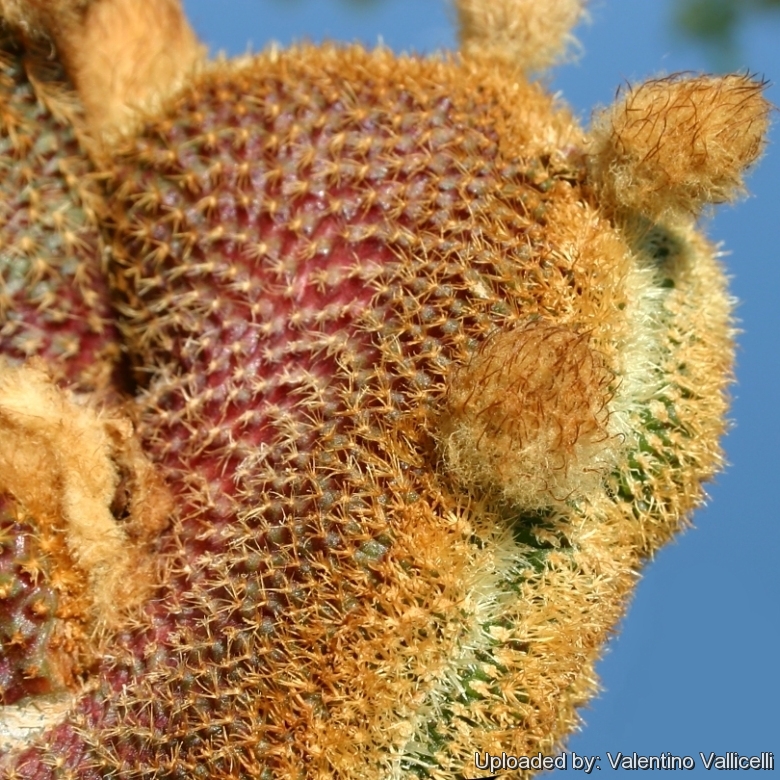
Frailea mammifera f. cristata Photo by: Valentino Vallicelli
This is a mall sized but charming plant with sulphur-yellow spines.
Origin and Habitat: Garden origin (Nursery produced cultivar)
Synonyms:
See all synonyms of Frailea mammifera
back
Accepted name in llifle Database:Frailea mammifera Buining & Bredero in KrainzKakteen (H. Krainz) 50-51: CVIe fig. (1972).Synonymy: 3
Accepted name in llifle Database:Frailea mammifera subs. angelesiae R.Kiesling & D.MetzingCactaceae Syst. Init. 21: 18 (17; fig.). 2006 [May 2006]Synonymy: 2
back
Description: The standard Frailea mammiferaSN|3646]]SN|3646]] is a well known miniature plant. The crest form - despite to its beauty - is still very rare and sought after by collectors, for it display of colours.
Stem: It is diminutive in size, fan shaped, glossy dark green and purple.
Ribs: With rounded and tapering tubercles bearing very typical dark purple-brown lunate, markings beneath the areoles.
Areoles: Placed in the upper side of the tubercles.
Central spines: 2-4, erect, golden to brown, stout, 2-3 mm long.
Radial spines: 18-20, spreading, yellowish or whitish, thin, 1,5-2 mm long.
Roots: Fat central tap root.
Flowers: Infundibuliform, larger than the plant itself, sulphur-yellow, 2,5 cm in diameter; tepals abruptly acuminate, long and slender, stigma-lobes 5-7. But don't be disappointed when the easily produced buds fail to open. Fraileas are cleistogamous, meaning that their flowers produce seed without even opening. Without the need for pollination, the buds rarely reach full bloom and remain closed. They will open only in great heat in the hottest, brightest, afternoon sun, if at all.
Fruits: Up to 8 mm in diameter. Dry, indehiscent, that detaches easily, pericarp membranous, fragile that break easily, releasing the seed.
Subspecies, varieties, forms and cultivars of plants belonging to the Frailea mammifera group
Notes: The crested form - similarly to the normal plants - produces cleistogamus flowers and self pollinated fruits. The normal flowers (seldom seen) will open only in great heat on the hottest, brightest, sunny afternoon , if at all.
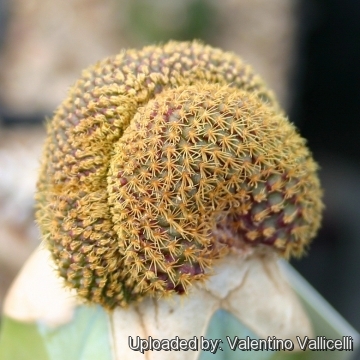 Frailea mammifera f. cristata Photo by: Valentino Vallicelli
Frailea mammifera f. cristata Photo by: Valentino Vallicelli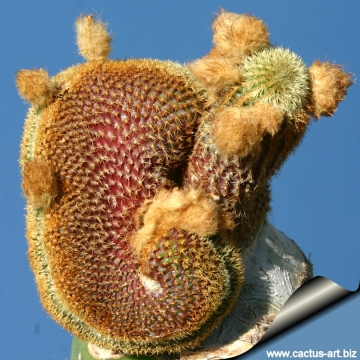 Frailea mammifera f. cristata Photo by: Cactus Art
Frailea mammifera f. cristata Photo by: Cactus Art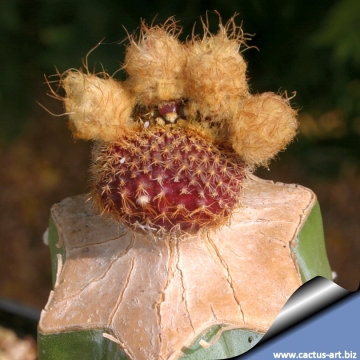 Frailea mammifera f. cristata Photo by: Cactus Art
Frailea mammifera f. cristata Photo by: Cactus Art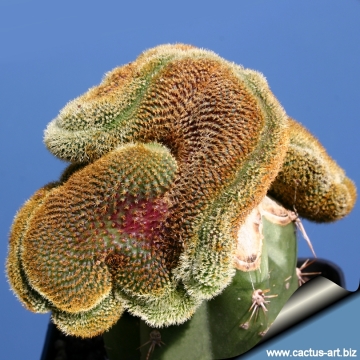 Frailea mammifera f. cristata Photo by: Cactus Art
Frailea mammifera f. cristata Photo by: Cactus ArtCultivation and Propagation: It is not too difficult in a greenhouse, although grows quite slowly. It is sometime seen as a grafted plant but grows on its own roots too.
Soil: Use rich, porous soil with little organic matter (peat, humus).
Exposure: It enjoys full sun, and it can take on a near black appearance when kept in bright light. In a shaded position the plants grow faster, but are not flat shaped or dark coloured.
Watering: Water sparingly from March till October (weekly during summertime, if the weather is sunny enough), with a little fertilizer added. Less or no water during cold winter months, or when night temperatures remain below 10° to prevent root loss. It is sensitive to overwatering (rot prone).
Fertilization: Feeding may not be necessary at all if the compost is fresh then, feed in summer only if the plant hasn't been repotted recently. Do not feed the plants from September onwards as this can cause lush growth which can be fatal during the darker cold months.
Hardiness: These plants need a minimum temperature of 5-10° C (but occasionally temperatures of a few degrees below 0° are not dangerous).
Crested growth: Unlike 'monstrose' varieties of plants, where the variation from normal growth is due to genetic mutation, crested growth can occur on normal plants. Sometimes it's due to variances in light intensity, or damage, but generally the causes are unknown. A crested plant may have some areas growing normally, and a cresting plant that looks like a brain, may revert to normal growth for no apparent reason. If you have any of the crested part left you need to remove the normal growth and leave the crested part behind this will need to be done regularly.
Propagation: Grafting or cuttings. Plants are usually grafted onto column-shaped cacti but proved to be able to produce their own roots if degrafted. Cuttings will take root in a minimum temperature of 20° C (but better in hot weather). Cuttings of healthy shoots can be taken in the spring and summer. Cut the stem with a sharp, sterile knife, leave the cutting in a warm, dry place for a week or weeks (depending on how thick the cutting is) until a callus forms over the wound. Once the callus forms, the cutting may be inserted in a container filled with firmed cactus potting mix topped with a surface layer of coarse grit. They should be placed in the coarse grit only; this prevents the cut end from becoming too wet and allows the roots to penetrate the rich compost underneath. The cuttings should root in 2 to 6 weeks. Large crested piece must be placed on the soil surface without burying the plant base down in the soil.














